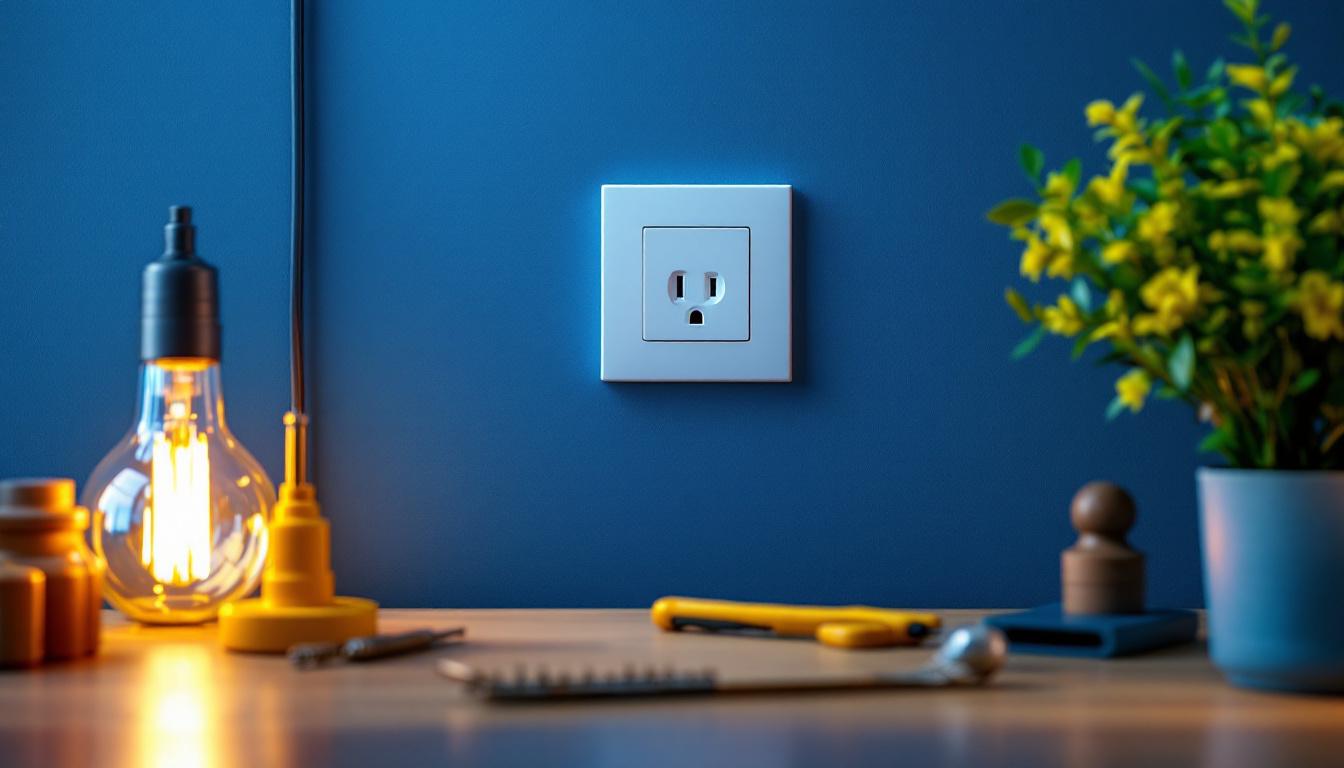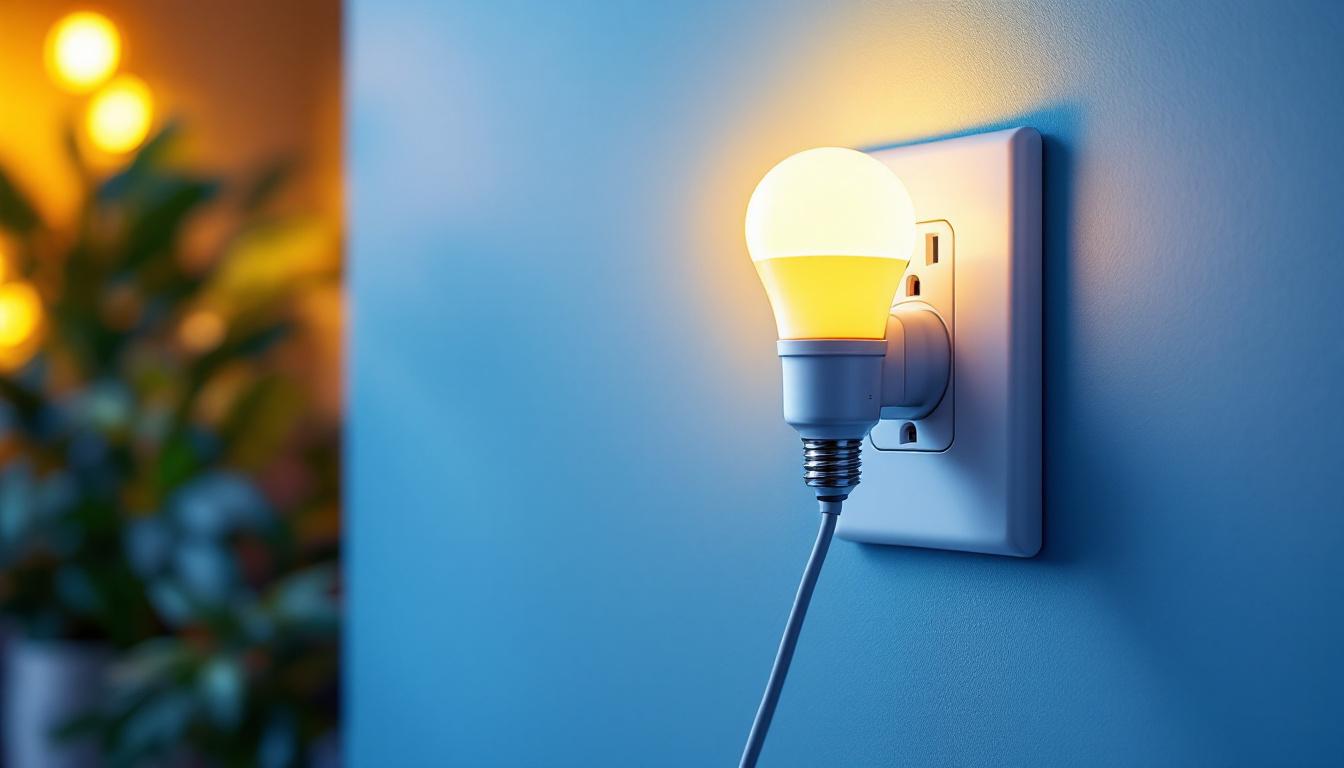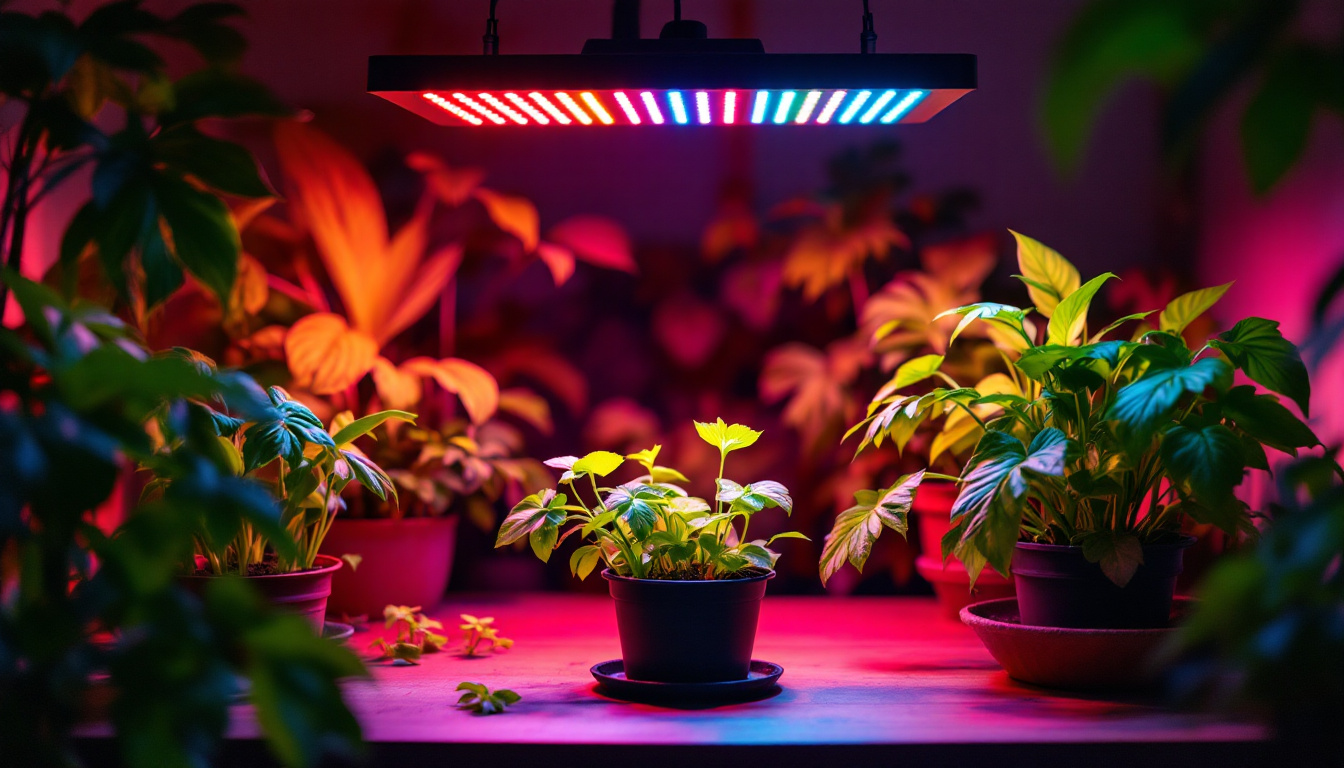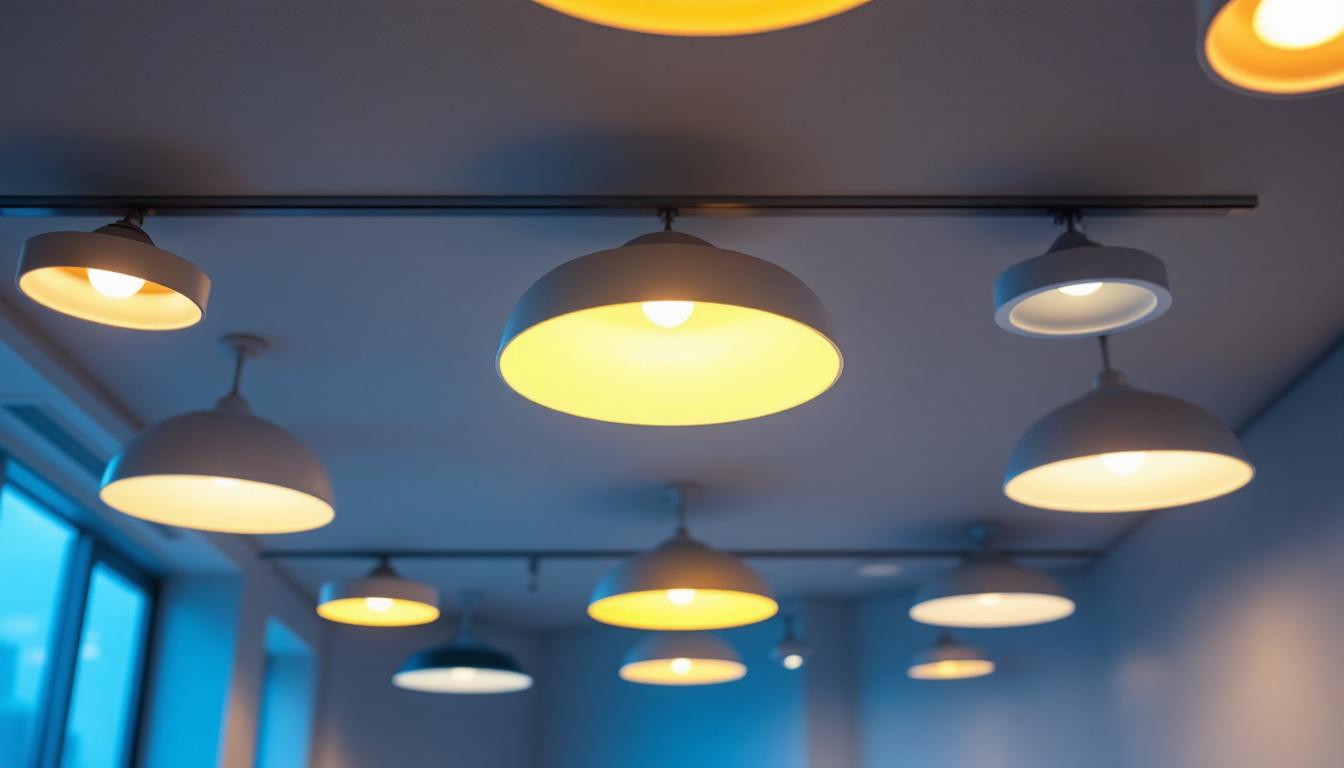
Square electrical outlets have become increasingly popular among lighting contractors and electricians alike. Unlike traditional rounded outlets, square designs offer a modern aesthetic that aligns well with contemporary architectural trends. But their appeal goes beyond looks. Square outlets often provide better alignment with wall plates and fixtures, making installations cleaner and more professional.
For lighting contractors, the choice of outlet style can impact the overall finish of a project. Clients often notice the details, and square outlets contribute to a sleek, cohesive appearance that complements modern lighting fixtures. Additionally, many square outlets are designed with enhanced durability and safety features, which can be a selling point when advising clients on upgrades or new installations.
Moreover, the versatility of square outlets allows them to be used in various settings, from residential homes to commercial spaces. Their design can accommodate a range of functionalities, including USB ports and smart home technology integration, which are increasingly sought after by tech-savvy consumers. This adaptability not only meets the demands of modern living but also positions electricians to offer tailored solutions that enhance user convenience and satisfaction.
Furthermore, the installation of square electrical outlets can lead to improved energy efficiency. Many of these outlets are designed to minimize energy loss, which is a crucial consideration in today’s environmentally conscious market. By opting for square outlets, contractors can help clients reduce their energy consumption, aligning with sustainable practices that are becoming more prevalent in construction and renovation projects. This focus on energy efficiency not only benefits the environment but also provides clients with long-term savings on their utility bills.
Before choosing square electrical outlets, contractors must ensure compatibility with existing or planned lighting fixtures and wall plates. Square outlets typically require matching square wall plates for a flush, seamless look. Mixing shapes can lead to awkward gaps or misalignments that detract from the overall aesthetic.
It’s also important to check the dimensions and mounting configurations. Some square outlets come with deeper housings or unique mounting brackets that might not fit standard electrical boxes. Verifying these details ahead of time prevents costly on-site adjustments. Furthermore, considering the color and finish of the wall plates can enhance the design of the space. A well-coordinated color scheme can elevate the overall ambiance, making it essential to choose finishes that complement the surrounding decor, whether it be modern, traditional, or industrial.
Electrical safety is paramount. Square outlets, like all electrical components, must meet or exceed local electrical codes and standards such as UL certification or equivalent. Lighting contractors should verify the voltage and amperage ratings to ensure the outlet can handle the load of connected lighting systems.
For instance, outlets intended for high-wattage lighting fixtures or dimmer switches may require specific ratings to avoid overheating or failure. Selecting outlets with built-in safety features like tamper resistance and surge protection can also enhance the reliability and safety of the installation. Additionally, it is wise to consider the potential for future upgrades; opting for outlets with higher ratings can provide flexibility for evolving electrical needs, accommodating new technologies or lighting solutions without necessitating a complete overhaul of the electrical system.
The materials used in square outlets affect both appearance and longevity. High-quality plastic or thermoplastic materials resist discoloration and cracking, especially in areas exposed to sunlight or temperature fluctuations. Metal faceplates or reinforced designs can add durability in commercial or high-traffic environments.
Contractors should consider the environment where the outlet will be installed. For outdoor or damp locations, weather-resistant or waterproof square outlets are essential. Choosing the right material ensures the outlet maintains functionality and appearance over time, reducing maintenance calls. Moreover, the finish of the outlet can impact its resistance to wear and tear; for instance, a powder-coated finish can provide additional protection against scratches and corrosion, making it ideal for environments where durability is a priority. Understanding the specific demands of the installation site will guide contractors in selecting the most suitable materials, ultimately leading to a more reliable and aesthetically pleasing outcome.
Proper preparation of the electrical box is critical for a smooth installation. Square outlets often require precise alignment to fit flush against the wall plate. Ensuring the electrical box is level and securely mounted helps achieve a professional finish.
In some cases, contractors may need to replace or adjust existing boxes to accommodate the square outlet’s shape and depth. Using a level and measuring tools during installation prevents crooked or uneven placements that can be visually unappealing. Additionally, it’s important to consider the depth of the electrical box; square outlets may require deeper boxes to accommodate thicker wiring or additional features such as USB ports. This foresight can save time and effort during the installation process, ensuring that everything fits seamlessly.
Wiring square outlets follows the same electrical principles as traditional outlets but requires attention to detail. Lighting contractors should double-check wire connections for tightness and proper placement within the outlet terminals. Loose connections can cause arcing or intermittent power issues.
Using wire strippers and screwdrivers designed for electrical work ensures clean, secure connections. It’s also advisable to test the outlet with a voltage tester before finalizing the installation to confirm proper wiring and functionality. Furthermore, labeling wires during the disconnection process can help avoid confusion when reconnecting them to the new outlet. This simple practice can streamline the installation and reduce the risk of errors, particularly in homes with complex wiring systems.
Once wired, the outlet must be carefully secured to the electrical box. Over-tightening screws can crack the outlet housing, especially with plastic materials, while under-tightening may cause the outlet to shift over time. Square outlets often have multiple mounting points, so evenly tightening screws is key.
When attaching the wall plate, ensure it sits flush against the wall without gaps. Some square plates come with adjustable mounting screws to fine-tune alignment. This step is crucial for achieving the clean, modern look that square outlets are known for. Additionally, consider the aesthetic aspect of the installation; choosing a wall plate that complements the room’s decor can enhance the overall appearance. For instance, a matte finish may suit a contemporary space, while a glossy finish might be more appropriate for a traditional setting. Taking the time to select the right wall plate not only improves functionality but also contributes to the room’s visual harmony.
Older buildings or renovations may have electrical boxes that don’t accommodate square outlets easily. Contractors might encounter round or irregularly shaped boxes that create fitting challenges. In these cases, using adapter plates or replacing the box with a square-compatible model is often necessary.
Planning ahead and inspecting the site thoroughly can save time and frustration. Bringing a variety of outlet and box options to the job site allows for quick adjustments without delaying the project.
Square outlets should complement the lighting design, not clash with it. For example, ultra-modern fixtures pair well with sleek, minimalistic square outlets, while more traditional or ornate lighting may look out of place with sharp-edged outlets.
Consulting with interior designers or clients about the overall aesthetic helps ensure the outlet choice enhances the space. Sometimes, a hybrid approach using square outlets in certain areas and traditional ones in others can strike the right balance.
Electrical codes vary by region and can affect outlet selection. Lighting contractors must stay informed about local regulations concerning outlet placement, tamper-resistant features, and grounding requirements. Square outlets must meet these codes just as any other electrical device.
Failing to comply can lead to failed inspections, costly rework, and safety hazards. Keeping up-to-date with code changes and manufacturer specifications ensures installations are both safe and legal.
Square electrical outlets offer several advantages that make them a smart choice for lighting contractors. Their modern design aligns with current architectural trends, adding value to residential and commercial projects. This can be a selling point when pitching upgrades or new builds to clients.
From a practical standpoint, square outlets often provide better alignment with wall plates and lighting fixtures, reducing installation errors and improving the final appearance. Their design can also accommodate newer technologies, such as USB charging ports or smart outlet features, enhancing functionality.
Durability and safety features integrated into many square outlet models reduce maintenance needs and improve long-term reliability. This benefits contractors by minimizing callbacks and enhancing their professional reputation.
Choosing the right square electrical outlet involves balancing aesthetics, functionality, and safety. Lighting contractors should evaluate the project’s design goals, electrical requirements, and environmental conditions before making a selection. Taking the time to understand the nuances of square outlets ensures a smooth installation and a satisfied client.
Staying informed about product innovations and code updates further empowers contractors to recommend the best solutions. Ultimately, square electrical outlets can elevate the quality and appeal of lighting projects, making them a valuable component in any contractor’s toolkit.
Ready to enhance your lighting installations with the sleek design and functionality of square electrical outlets? At LumenWholesale, we provide lighting contractors with the highest quality, spec-grade lighting products at unbeatable wholesale prices. Say goodbye to inflated markups and hello to superior lighting solutions that meet the highest industry standards. With our hassle-free bulk buying and free shipping, you can trust that you’re getting premium lighting at the best value — without any hidden fees. Elevate your lighting projects today and experience the ideal combination of quality, affordability, and convenience. Visit LumenWholesale for Wholesale Lighting at the Best Value.

Discover how wall electrical outlets play a crucial role in energy-efficient lighting solutions.

Discover the essential insights lighting contractors need to know about LED grow lights.

Discover how outlet plugs can significantly cut costs for lighting contractors by enhancing energy efficiency and minimizing waste.

Discover the common oversights lighting contractors make with LED pot light fixtures.